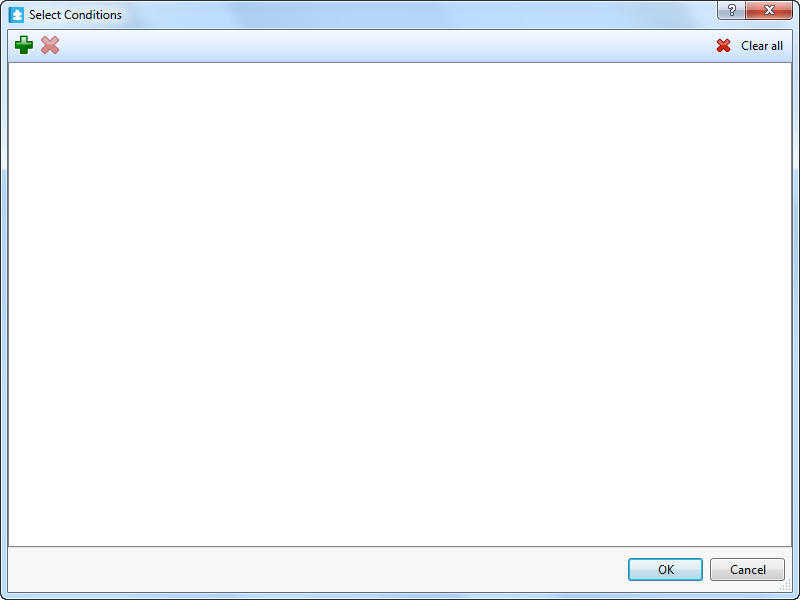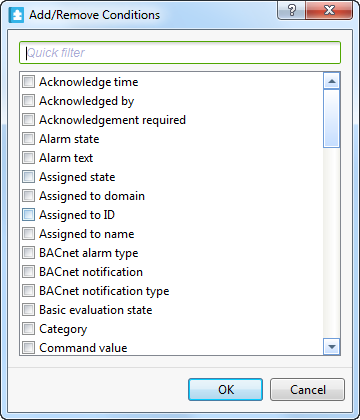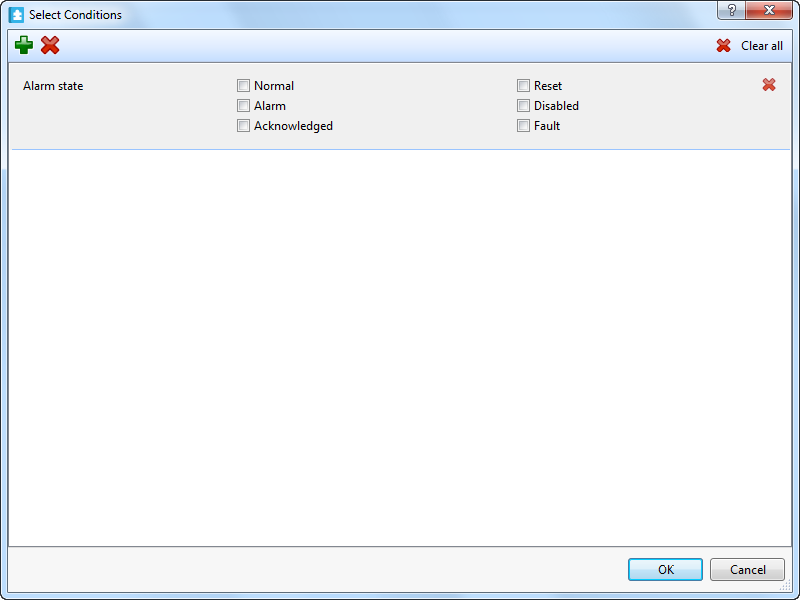You are notified by alarms when some important event occurs. For example, if the temperature is too low or too high in a building, if a window is open, or if something is broken, such as a fan. The system administrator sets up the alarms and decides to whom the alarm is sent.
When an alarm is triggered, the alarm is displayed in a list together with information about the alarm and its current status. In the list, you can manage the alarms, for example, acknowledge, accept, and comment alarms. In addition, you can sort, hide, and disable alarms in the list. You can also open a detail view to get information on all properties of an alarm.
action_zoom_plus_stroke

Abbildung:
Alarms list
Alarm Acknowledgements
When you acknowledge an alarm, you let other users know that you have seen the alarm. Acknowledging an alarm does not necessarily mean that you are responsible for solving the cause of the alarm.
Für weitere Informationen siehe Alarm quittieren
.
Alarm Assignments
A triggered alarm can be manually or automatically assigned to a specific user or user group that seems to be most suited to correct the problem.
Für weitere Informationen siehe Alarmzuweisungen
.
You can add attachments to alarm objects, except System Information alarms. An attachment is a link pointing to an object in the system. When an alarm that has an attachment is triggered, a paperclip icon is displayed in the Alarms pane and Alarm Views. It is also possible to configure the attachment to display when the alarm is triggered.
Für weitere Informationen siehe Alarmanhänge
.
User Actions
User actions are used to ease the understanding of what triggered the alarms and what to do to solve the cause of the alarm. User action can be mandatory or optional depending on how the system is set up.
Für weitere Informationen siehe Benutzeraktivitäten
.
Hide and Disable
You can hide or disable alarms to decrease the number of alarms that are presented in the Alarms pane or Alarm View. This is particularly useful when you have many active alarms at the same time.
Für weitere Informationen siehe Alarm ausblenden und deaktivieren
.
Alarm State-change Logging
Every time an alarm changes its state, such as from alarm state to reset state, an event is written in the event log and shown in the Events pane in WorkStation. You can disable state-change logging if you are only interested in the current alarm status. For example, you want to present the current alarm status in a graphic and do not care about the event history.
Für weitere Informationen siehe Alarm State-Change Logging
.
Alarm and Event Details
To quickly get all the details of a specific alarm or event in WorkStation, or an alarm in WebStation, you can use a Detail view. The Detail view always displays all properties that can be added and displayed in the Alarms pane, Events pane, Alarm View or Event View.
Für weitere Informationen siehe Alarm and Event Details
.
Temporary User Filters
You change the Alarms pane or Alarm View filter conditions to narrow what is displayed in the Alarms pane or Alarm View.
Für weitere Informationen siehe Temporäre benutzerdefinierter Filter
.
When you make layout or filter changes to the Alarms pane or an Alarm View, you can save the changes as a favorite. The purpose of the favorite is to quickly and temporarily change the Standard layout and narrow what is displayed in the Alarms pane or Alarm View by applying the favorite filter conditions.
Für weitere Informationen siehe Favorites
.
Alarm View and Event View Columns Customization in WebStation
You can customize the columns in an Alarm View and an Event View to make it easier to get an overview over the properties that are displayed in the view.
Für weitere Informationen siehe Alarm- und Ereignisansicht Spaltenanpassung in WebStation
.






 How Alarms Work
How Alarms Work
 Alarms Pane and Alarm View Toolbar
Alarms Pane and Alarm View Toolbar
 Dialogfeld Bedingungen auswählen
Dialogfeld Bedingungen auswählen
 Dialogfeld Bedingungen hinzufügen/entfernen
Dialogfeld Bedingungen hinzufügen/entfernen
